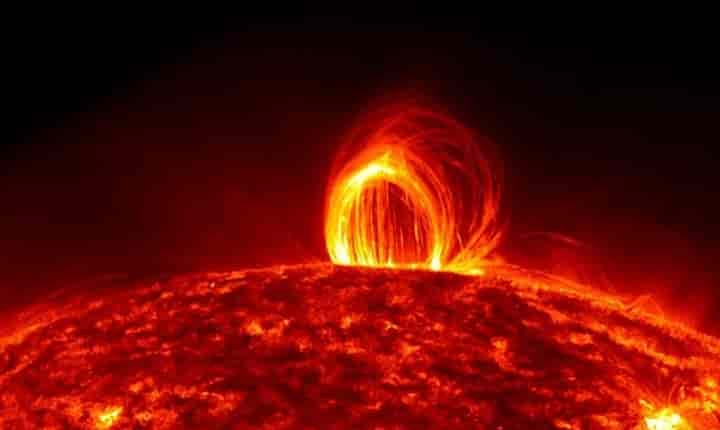After weeks, following the powerful solar flare that created a blackout over the Atlantic, the Earth is likely to be hit by a solar storm that is heading towards it. The event is expected to take place on Tuesday and Wednesday.
Described as a geomagnetic storm, the solar wind stream at high speed is expected to hit the planet’s magnetic field. This warning was sounded by the weather forecasters.
The solar storm was generated at an equatorial hole that has recently come up in the Sun’s atmosphere. The storm could result in auroras on the poles as it strikes with Earth's magnetic field.
It is anticipated that the huge solar flare will affect the satellites which operate in the planet’s upper atmosphere. This will impact the GPS navigation, satellite TV and mobile phone signals.
Moreover, these flares do carry the danger of affecting power grids in some regions of the globe. Further, experts also fear that strong winds may lead to a geomagnetic storm in Earth's magnetosphere.
When a major disturbance of Earth’s magnetosphere occurs it is called a geomagnetic storm. It takes place when there is a very efficient exchange of energy from the solar wind into the space environment surrounding Earth.
Also read: Indian researchers spot rare supernova
The National Oceanic and Atmospheric Administration (NOAA) states the storm is the result of major changes in the currents, plasmas produced by solar winds.
In order to create a geomagnetic storm however the solar wind needs to keep up the high speeds for a long period of time. It is only then that the wind’s energy is transferred into Earth's magnetic field.
It is the solar Coronal Mass Ejections that are associated with the largest storms in which billions of tons of plasma from the star are sent towards planets, including the Earth.
Even though the CMEs usually take days to reach the earth, it has been observed that some arrive within a span of 15 to 18 hours after being ejected from the Sun.
One of the biggest solar flares ejected by the sun was observed recently and it caused a radio blackout over the Atlantic. The ionisation of the Earth’s top atmosphere by the X-class solar flare resulted in a shortwave radio blackout over the Atlantic Ocean.
Also read: In a first, Indian scientists decode genes of salt-tolerant mangrove species
A solar flare takes place when a sudden, rapid, and intense explosion on the Sun’s surface takes place which is a result of sudden release of huge quantities of energy stored in magnetic fields. This explosion emits radiation that goes across the length and breadth of the universe, hurtling them towards planets in the solar system. Radio waves, x-rays and gamma rays are what make up these radiations.
The Indian Space Research Organisation had observed recently that around 100 microflares, providing new insights about coronal mass heating on the Sun.




















